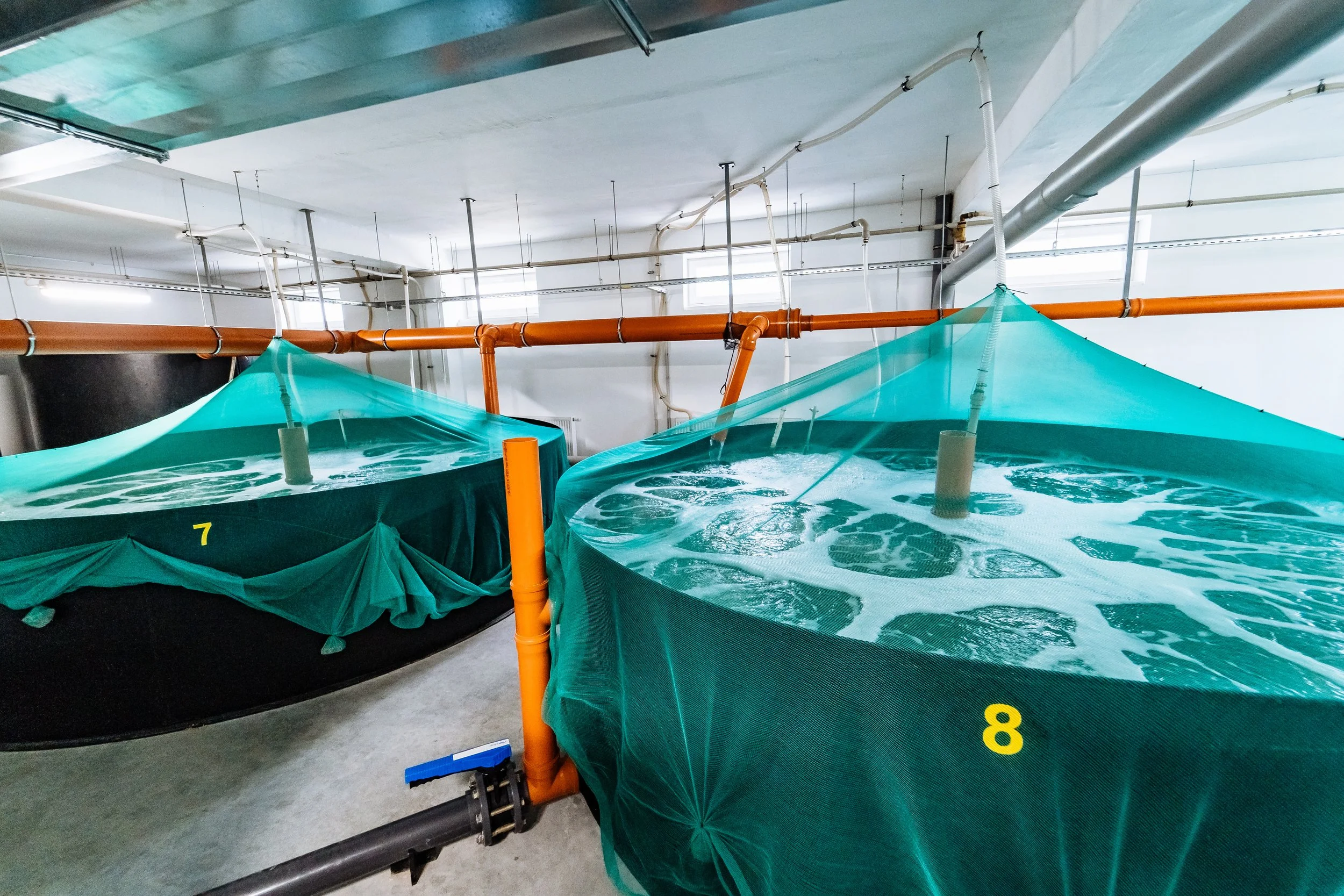SUMMARY STATEMENT
INDOOR Recirculating Aquaculture Systems (RAS)
The internet is currently overwhelmed by a wide variety of reports and offerings advocating a wide variety of world-saving opportunities to invest in “cutting edge aquaculture technologies”. Most of these are advocating the use of (Indoor) Recirculating Aquaculture Systems known as RAS. They sound good and have been shown to work pretty well at the university level and in the lab. The principle of water re-use and purification is essential.
However, the fact is that the very long and diverse history of standard RAS commercial applications is a heart-breaking trail of tears littered with the skeletons of zillions of commercial start-ups. The simple problem is that raising fish is one thing, whereas raising fish on a commercial scale where “profits” are the name of the game, is another world. The reader is invited to search for commercial scale, RAS operations that are not kept afloat by grants, or very large stock offerings and have been significantly profitable for more than 2 years. They are few.
Heavy reliance upon technical machines and warning systems that are no more reliable than your internet service, your cell phone, or your electrical system is a prime reason for indoor RAS failures. Couple this with the inherently VERY small total volume of recirculating water and you have a very unforgiving and highly volatile system. One small problem can cause an exponential reaction with very little time for correction because, again, the total water volume of the system is very small and the fish density needed to justify the normally very high construction costs is high.
OUTDOOR Floating Raceways (usable as In-Pond RAS or Biofloc)
Superior Aquaculture uniquely offers a Superior Floating Raceway System (patented) that can perform all of the standard RAS or Biofloc functions (except perfect temperature control) but in a pond or other waterway. The huge volume of water in our systems provides a very “forgiving” and “non-volatile” water reserve that can continuously flow through the raceway. The system is SIMPLE, of low cost, and both financially and environmentally sustainable. It is listed as a Best Management Practice in North America, and Returns on Investments (ROI’s) can often be achieved in less than one year.
Powered by the sun and wind, the system’s pond water is naturally aerated and automatically treated for ammonia. Soluble nutrients and CO2 are absorbed by the algae and used to produce omega-3’s, O2 and nutritious food. The phytoplankton are then consumed by the zooplankton, and the nutrient laden zooplankton are like a super healthy candy for the fish.
Solids collected in the raceway’s settling zone have their own well-established value, but can sometimes be “pressed” for enough algae oil to provide 100% of the farm’s energy needs – all from the sun.
In cases where the host water body might contain higher levels of algae than desired, additional auxiliary equipment such as rotating drum filters, can easily be added. The reader is invited to review the associated “Chart” and the Blog section at www.superiorraceways.com .
Biofloc Systems
Biofloc technology is a system of water parameter management that is normally and best done outdoors in raceways or lined ponds. In contrast to RAS, the water exchange rate (within the system) is normally low, and the amount of solids kept in suspension is very large. Because the goal of biofloc is intensive or super-intensive production, stocking densities and feed rates are high. Control of nitrogen pathways via microbial management of the carbon:nitrogen ratio is critical. There is no better way of managing the rather “touchy” water control, which is, “…based upon the manipulation of microbial processes within the system” (1), than with Superior Floating Raceways within a pond or other waterbody.
“Numerous studies have demonstrated benefits of culturing shrimp in biofloc-rich water compared to clear water; these benefits include improved growth rate, improved feed conversion ratio, and the contribution of various nutritional qualities by the microbial community.” (2) The above, “… shrimp production enhancement has been attributed to both bacterial and algal nutritional components.” (3)
Superior Aquaculture has previously documented the massive amount and value of live zooplankton for many species that can be provided by Superior Floating Raceways. The company holds patents and others pending that outline proprietary means of utilizing quasi-biofloc techniques and other means for achieving super high-intensity production.
The use of biofloc or quasi-biofloc techniques within Superior Floating Raceways is endorsed.

